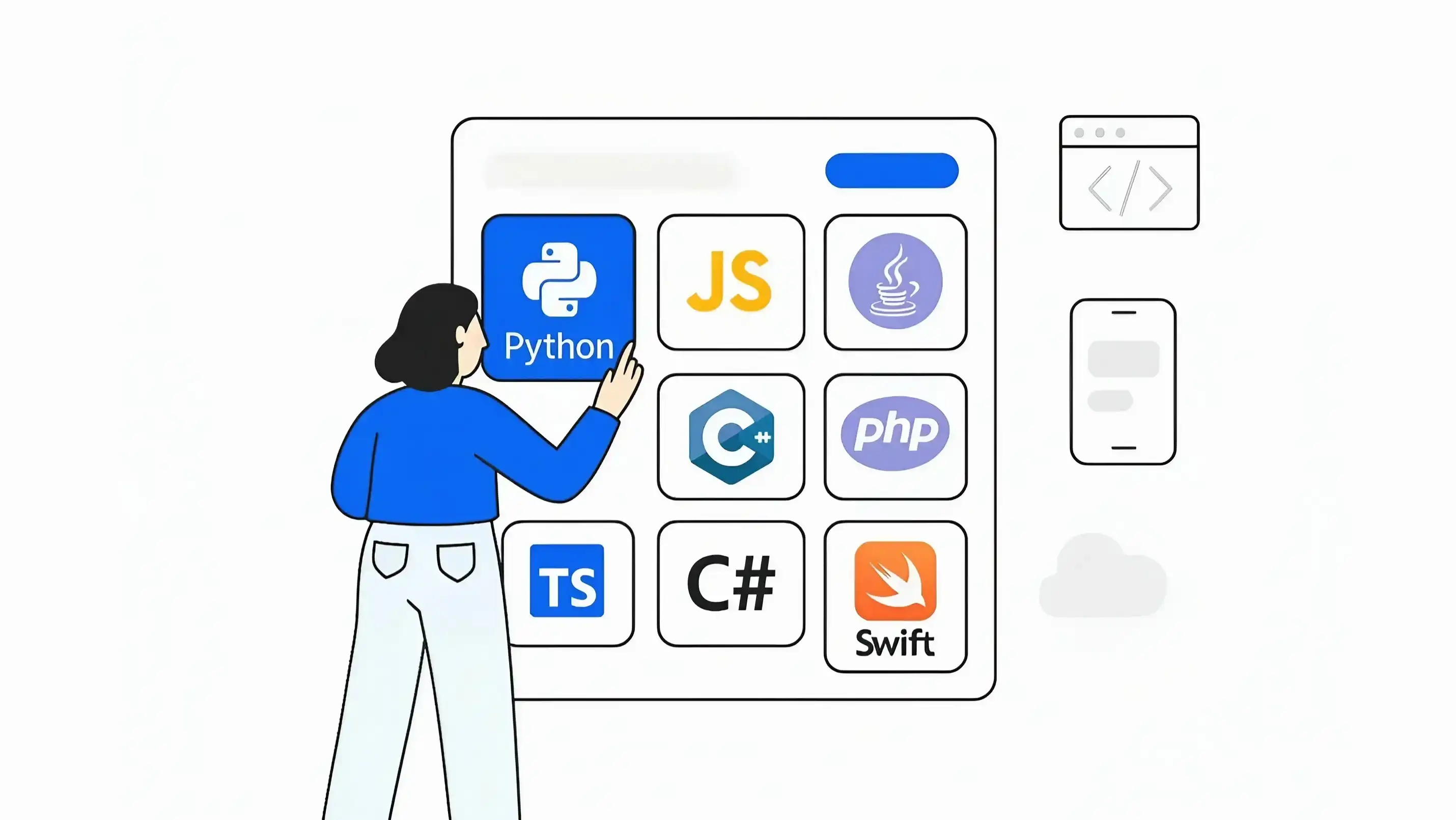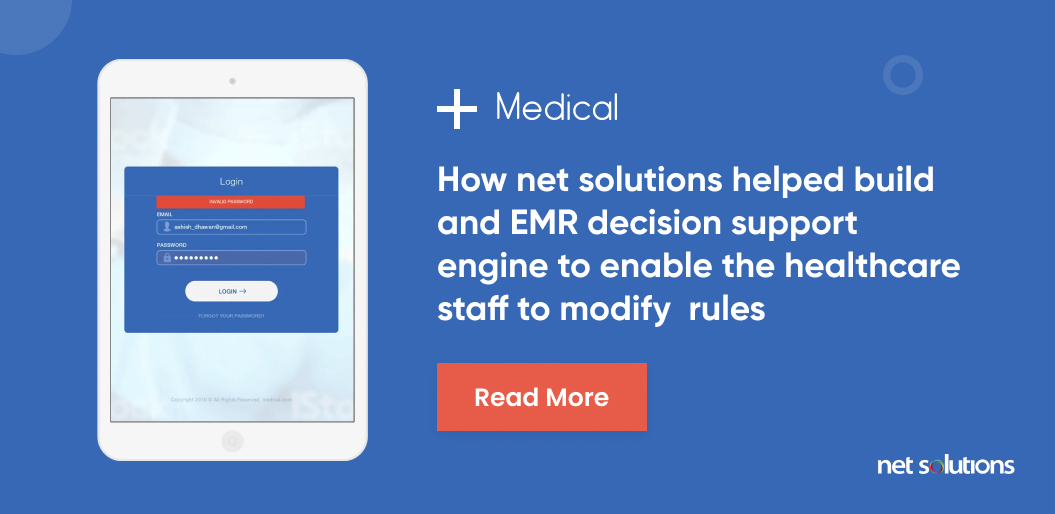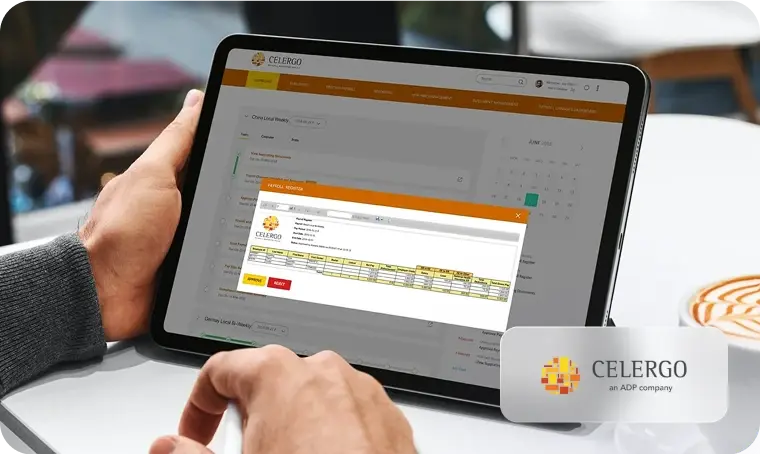Programming languages are the bedrock of innovation, enabling businesses across sectors to thrive. The modern world as we know it wouldn’t exist without these dynamic languages. Prepare to embark on a journey that will empower you to select the programming language that perfectly aligns with your unique vision and business requirements.
Programming languages have emerged as unsung heroes shaping the very fabric of our digital existence. These languages have become the cornerstone upon which we’ve built every business. From the humblest startups to the industry giants, all owe their success to the power and versatility of programming languages.
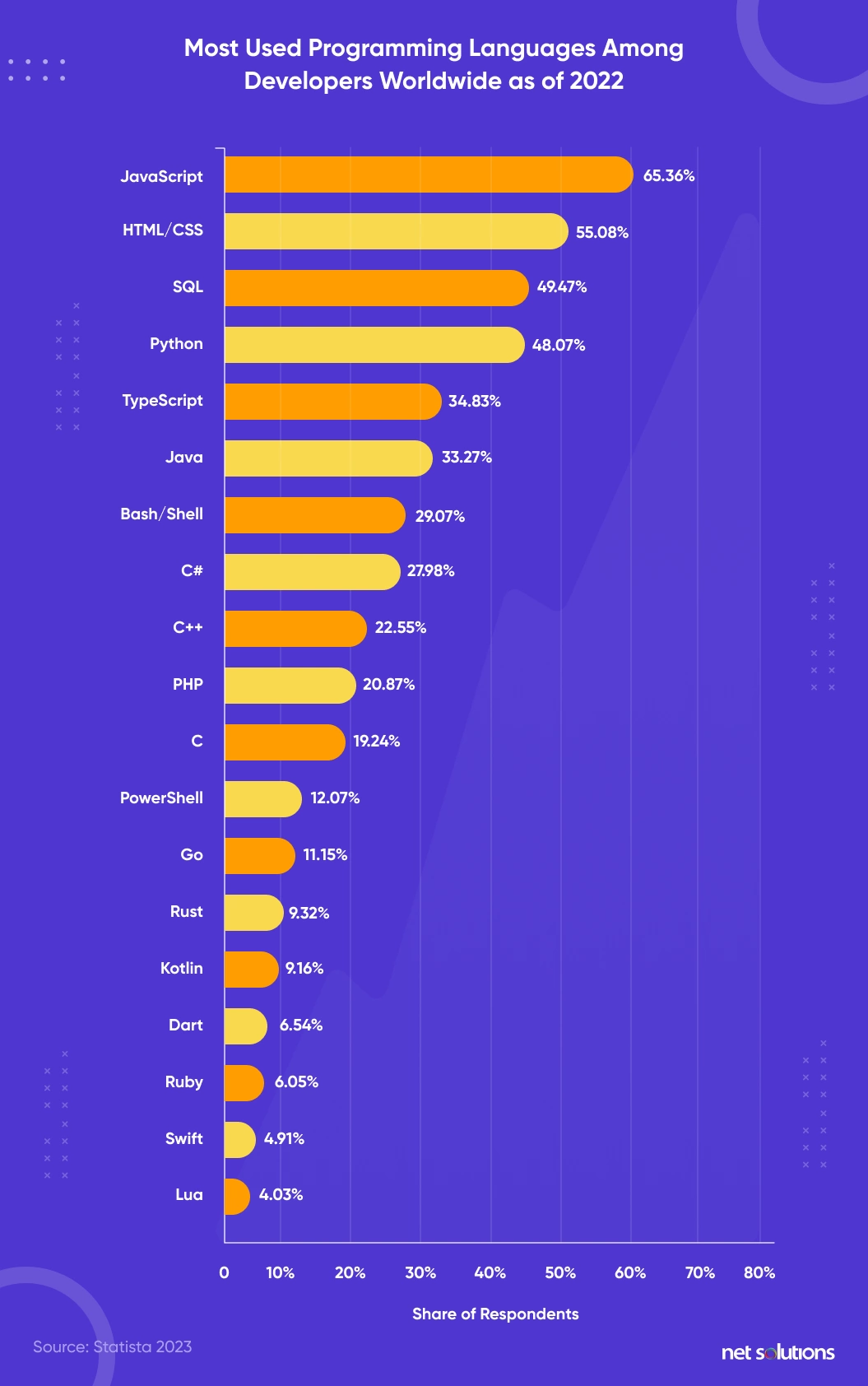
With this blog, we delve into the realm of programming languages, uncovering the most popular and influential ones that hold the potential to transform your digital product. With our expert insights, you’ll gain the knowledge and discernment necessary to make an informed choice.
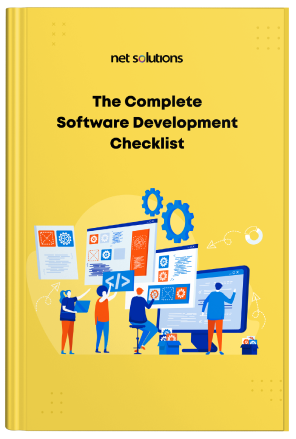
We respect your privacy. Your information is safe.
Top 11 Programming Languages That Will Lead In The Future
The most popular programming languages for 2025 include –
1. JavaScript

JavaScript, birthed in 1995 by Brendan Eich at Netscape, was initially intended to invigorate web pages. Originally christened LiveScript, it distinguishes itself from other programming languages by eschewing the conventional input and output paradigm.
JavaScript is renowned as a lightweight, cross-platform, single-threaded, and interpreted compiled programming language, commonly recognized as the scripting language for webpages. Its proficiency in web development is widely acknowledged, and it finds utility beyond browsers in numerous non-browser environments.
Benefits of JavaScript
- JavaScript, known for its dynamic typing, is a valuable tool for client- and server-side development.
- With its remarkable versatility and capacity to simplify intricate integrations, JavaScript empowers the creation of exceptional digital experiences.
- It is also swift and leverages simple syntax and can be used to create rich user interfaces and experiences.
- JavaScript is both an imperative and declarative type of language.
Drawbacks of JavaScript
- JavaScript is interpreted differently across browsers and is vulnerable to client-side security issues.
- Most users disable JavaScript due to security fears.
What is JavaScript used for?
JavaScript is ideally suited to web app development, single-page app (SPA) development, and native desktop and mobile applications.
| Platform | Cross-platform (desktop, mobile, web) |
|---|---|
| Top JavaScript frameworks |
CinderAngular – framework for web, mobile web, native mobile, and native desktop applications that leverages Microsoft’s Typescript language and code-splitting to speed loading. Vue.js – top framework for creating single-page web apps (SPAs) by combining the best of React and Angular. Node.js – an open-source, cross-platform back-end environment. Ionic – an open-source hybrid app development framework. React Native – an open-source, cross-platform UI framework. |
| Top JavaScript libraries |
React.js – React is a library for creating user interface (UI) jQuery – a small library designed to simplify HTML DOM tree traversal and manipulation, event handling, CSS animation, and Ajax. |
2. HTML

HTML, the universally accepted markup language for the web, employs a text-based methodology to delineate the structural composition of content within HTML files. As the bedrock of web pages, HTML facilitates web page development by organizing websites and web applications. HTML establishes a cohesive framework by defining the interconnections between web pages through hypertext.
Benefits of HTML
- HTML is easy to learn and use, making it the backbone of any web page and accessible to even novice users.
- HTML is supported by comprehensive frameworks and grid systems for responsive design, allowing developers to focus more on refinement than full coding.
- Text is compressible, helping with speed.
- You can integrate HTML with other languages like CSS, JavaScript, etc.
Drawbacks of HTML
- HTML is designed for static content. HTML can only create static web pages. For dynamic web pages, you need to use other languages.
- The security element needs to be more satisfactory. Although newer HTML standards are more secure, added thought needs to be given to address security.
- You must write a large amount of code to create a simple web page.
What is HTML used for?
HTML is used to create webpages, often assisted by CSS (cascading style sheets) and scripting languages like JavaScript.
| Platform | Web |
|---|---|
| Top HTML frameworks |
Twitter Bootstrap – has a 12-grid responsive layout, 13 custom jQuery plugins for common UIs like carousels and modal windows, a Bootstrap customizer, and more. Foundation – has rapid-prototyping capabilities and a responsive grid system. |
| Top HTML libraries |
The Quackit HTML Code Library – a library, or list, of HTML codes. The pages within the library contain snippets of HTML code that can be copied and pasted into your HTML documents. |
3. SQL

Structured Query Language (SQL) is an internationally recognized programming language that adheres to standardized conventions. It is predominantly employed to oversee relational databases and execute diverse operations on the data they contain. By utilizing SQL, users can seamlessly access and manipulate databases.
Benefits of SQL
- It facilitates data description, providing users with a comprehensive overview of the data’s structure, organization, and relationships.
- Using SQL, users can effortlessly define and manipulate data within a database, enabling efficient data management and modification.
- SQL provides the capability to create and drop databases and tables, offering flexibility in database management.
- SQL allows users to leverage database functions, create views, and store procedures, to enable advanced database operations and enhance data processing capabilities.
- SQL encompasses various other functionalities contributing to its comprehensive and versatile nature.
Drawbacks of SQL
- SQL has a complex interface.
- Costly implementation.
- Lack of complete control due to hidden business rules.
- SQL databases do not support real-time analytics.
What is SQL used for?
SQL is extensively used beyond Facebook, with applications in music streaming services like Spotify, banking platforms such as Revolut, and other social media giants like Twitter and Instagram.
As the most commonly used database language, SQL is suitable for any company requiring efficient storage and management of relational data across various industries. Its versatility enables it to be employed in e-commerce, content management, healthcare, and more.
| Microsoft SQL Server | SQLAlchemy |
| MySQL | Django ORM |
| PostgreSQL | Hibernate |
| Oracle Database | Entity Framework |
4. Python

Python is a high-level, interpreted, object-oriented programming language with dynamic semantics. It is widely acclaimed for its built-in high-level data structures and features, such as dynamic typing and binding. These attributes make Python particularly appealing for Rapid Application Development and serve its purpose as a scripting or glue language to integrate existing components seamlessly.
Benefits of Python
- Python is English-syntax based, making it accessible and applicable to various programming needs.
- Python possesses broad community support, robust libraries, and many frameworks as a well-established language.
- Easy to code and learn.
- A large number of Python machine learning and analytical packages are available.
Drawbacks of Python
- Python’s interpreted nature lacks multithreading, potentially causing speed limitations.
- Extensive use of libraries and active objects in Python can result in high memory usage.
- Python is slower than languages like C++, C#, and Java due to the absence of Just-In-Time optimizers.
- Python’s whitespace-based syntax can pose a slight challenge for new coders during implementation.
What is Python used for?
Python is a multi-purpose programming language, often called a “universal language,” making it ideal for websites and software, web apps, and desktop apps. You can use it for AI, data analysis, and machine learning.
| Platform | Web or desktop |
|---|---|
| Top Python web frameworks |
Django – a top Python framework, Django is a free, open-source, and full-stack web framework to develop complex code and apps. Flask – is available under the BSD license. A “micro-framework,” Flask provides developers flexibility over the tools, databases, and extensions. CherryPy – a minimalist web framework designed for rapid web app development. |
| Top Python libraries |
TensorFlow – an open-source library for computations and graphs to make neural networks and deep learning. Pandas – a fast, lightweight library for data analysis and modeling. NumPy – a popular mathematics library. PyTorch – based on Torch, a Facebook machine-learning library that supports computations, modeling, and graphing concepts. |
5. TypeScript

TypeScript, an open-source language by Microsoft, extends JavaScript with object-oriented features and type-checking. It is a typed superset of JavaScript that compiles plain JavaScript, allowing developers to add static typing to their JavaScript code.
Benefits of TypeScript
- TypeScript enables type specifications to detect mismatches and report errors during development.
- TypeScript performs compile-time type checking, ensuring type compatibility before executing the code.
- TypeScript is platform-independent and compatible with any operating system like Windows, macOS, and Linux.
- TypeScript allows manipulation of the DOM, similar to JavaScript.
Drawbacks of TypeScript
- TypeScript lacks theoretical classes.
- Third-party libraries sometimes lack definition files in TypeScript.
- TypeScript has certain missing features compared to JavaScript, such as higher-order functions, composition, and generics with higher keys.
What is TypeScript used for?
TypeScript adds static typing to JavaScript, catching errors during development and improving code quality. It offers advanced features like interfaces and types inference, aiding scalability and code management. TypeScript combines the reliability of static typing with JavaScript’s flexibility for more robust applications.
| Web | Angular, React, Vue.js |
| Mobile | React Native |
| Desktop | Electron |
6. Java

Java is a class-based, object-oriented programming language that minimizes implementation dependencies. It enables developers to write code once and run it on multiple platforms without recompilation. This characteristic, known as “write once, run anywhere” (WORA), allows compiled Java code to be executed on any platform that supports Java.
Benefits of Java
- Java is renowned for its speed and reliability, attributed to its extensive usage and continuous refinement over the years.
- The language has benefited from a robust community support system and a wide range of frameworks and libraries, further extending its capabilities.
- This ecosystem of support and resources contributes to Java’s reputation as a fast and dependable programming language.
Drawbacks of Java
- Java has strict syntax needs and complex code, leading to a longer development time.
- Java is faster than Python but takes up a lot of memory.
What is Java used for?
Java helps develop high-performance software on various platforms, including mobile apps, AI, big data, web
applications, etc. In addition, Java is probably the most well-known for mobile or in-game console games.
| Platform | Web, Mobile, desktop |
|---|---|
| Top Java frameworks |
Spring – an open-source framework for creating secure enterprise web applications for any deployment platform, focusing more on the “plumbing” of the app than the business logic. Struts – Apache Struts is an open-source web app framework following the MVC architecture. Hibernate – Hibernate ORM is an object-relational mapping tool that maps a domain model to a relational database. Spark – a web framework for Java & Kotlin, Apache Spark is free and open-source to support data engineering, data science, and machine learning |
| Top Java libraries |
Apache Commons – has 43 modular libraries with domains like Collections, Math, Classes, Database, Caching, I/O Utils. Google Guava – covers crucial utilities, collections, string manipulation, concurrency utilities, graph libraries, I/O utils, hashing, and more. Has a better software design compared to the Apache Commons library. Jackson – is a suite of data processing libraries for Java. Also supports data formats such as Avro, BSON, CBOR, CSV, Smile, Protobuf, XML, or YAML and data types such as Guava, Joda, PCollections, and more. |
7. Bash/Shell
Bash, also known as the Bourne Again Shell, is an interpreter that executes shell commands. It acts as an intermediary between the user and the Operating System, processing plain text commands and utilizing OS services accordingly. Bash represents an enhanced iteration of the original Bourne Shell (Sh). Shell scripting involves the creation of programs to execute specific tasks, with shell scripts being the files or programs that the shell executes.
Benefits of Bash/Shell
- Easy to build
- Can run multiple commands smoothly
- Interactive debugging
- Portable
- Time-saving
- Cost-effective
- Can be automated
Drawbacks of Bash/Shell
- Not nearly as fast as a standard program
- Limited usability
- Launches a new process for every shell command executed
What is Bash used for?
Bash, like other CLIs, is used for any computer application that requires precision when working with files and data, especially where large numbers of files or large quantities of data need to be searched, sorted, manipulated, or processed in any way.
Top Shell scripting tools
- Awk
- Grep
- Jq
- Sed
- Curl
- Git
| Unix/Linux | Bash, sh, ksh, csh, tcsh |
| macOS | Bash, sh, zsh |
| Windows (WSL) | Bash, sh |
8. C#

C# has remained consistently popular, one of the “core” languages. C# is a .NET programming language developed by Microsoft.
Benefits of C#
- C# is based on object-oriented programming, making it possible to build the app incrementally and support easier management.
- C# syntax resembles human language and benefits from using Visual Studio for development.
Drawbacks of C#
- C# offer quite the same performance as C++ because of the two-stage compilation.
- It relies on .NET, which may not be in sync with the overall tech stack and requires even greater knowledge.
What is C# used for?
C# is ideal for backend/server-side architecture and for developing Windows desktop applications. Still, it can be used cross-platform and even for mobile app development (Xamarin uses C#). C# is the primary language for game development using the Unity game engine.
| Platform | Cross-platform, including mobile and enterprise software applications |
|---|---|
| Top C# frameworks |
Accord.NET framework – NET machine learning framework with audio and image processing libraries written entirely in C# for developing high-quality computer vision, computer audition, signal processing, and statistics applications. Roslyn (.NET Compiler Platform) – a free and open-source C# and Visual Basic compiler with extensive code analysis APIs It enables the development of code analysis tools using the same APIs as Visual Studio. |
| Top C# libraries |
Cake – a cross-platform build automation system with a C# DSL. DotNetNuke – a web content management system that jumped from No. 14 in 2018 to No. 7 in 2019. |
9. C and C++

C and C++ are among the oldest languages, ranking individually on the TIOBE index at positions 2 and 4, respectively, with C overtaking Java for the second position.
Benefits of C and C++
- C/C++ are mid-level languages and are highly portable across operating systems.
- C++ is generic, imperative, and object-oriented, with dynamic memory allocation to make it execute faster.
Drawbacks of C and C++
- Both C and C++ are complex and hands-on.
- Debugging is difficult due to complex syntax and pointers, with no support for garbage collection.
- C is not as secure as C++, but security is a concern with both due to “memory unsafety.
What are C and C++ used for?
C is for system programming, embedded devices, and OS kernels, but we can use both for application development. C++ is majorly for graphics-heavy software such as games.
| Platform | Web, Embedded, desktop |
|---|---|
| Top C and C++ frameworks |
Cinder – Cinder is an open-source C++ library for “creative coding.” Supports platform-native windowing and event handling, as well as I/O abstraction, and includes an XML and JSON parsing API. OpenCV – A BSD-licensed Open Source Computer Vision Library is a computer vision and machine learning library written natively in C++. Facil.io – High-performance web application C framework Onion – Library to create simple HTTP servers and web applications |
| Top C and C++ libraries |
The Standard C++ library – operations on file systems and their components, such as paths, directories, and regular files It was an experimental library in C++14, but it will become a standard library in C++17. Boost – contains code packages to support linear algebra, pseudorandom number generation, multithreading, image processing, regular expressions, string and text processing, and unit testing. FANN – Fast Artificial Neural Network (FANN) is an open-source neural network library written in C. Features include backpropagation training, evolving topology training, cross-platform, and can use both floating-point and fixed-point numbers. |
10. PHP

PHP is a consistent top performer, but its popularity has declined. PHP is embedded in HTML and is an open-source server-side scripting language.
Benefits of PHP
- PHP is famous for its simplicity, speed, and flexibility.
- PHP is open-source and object-oriented with a simple syntax.
- PHP is well-supported by all leading databases, portable across all platforms, and supported by many frameworks.
Drawbacks of PHP
As an interpreted language, PHP is known to execute more slowly. PHP is also not a strict language, so PHP code can become poorly structured when worked on by various teams or over time.
What is PHP used for?
PHP is used primarily in web development, used by over 78% of all websites whose server-side programming is known. PHP can be used for static and dynamic/interactive web pages, applications, and eCommerce platforms, with particular strengths for databases.
| Platform | Cross-platform (desktop, mobile, web) |
|---|---|
| Top PHP frameworks |
Laravel – Laravel is a web app development framework known for expressive and elegant syntax. Laravel leverages the Blade template engine and includes built-in object-oriented libraries. Symfony – Known to be one of the most reliable frameworks, Symfony provides bundles and components to improve developer productivity. CodeIgniter – CodeIgniter is a very light framework (2MB with documentation), MVC-based, fast, reliable, and ideal for dynamic web apps. CakePHP – CakePHP leverages a templating system and lets developers create standalone libraries, components, extensions, and helpers to reuse code when making web apps. Yii – an open-source PHP framework for large-scale web apps, with extensible tools, integration with jQuery and AJAX features, and Gii to ease the process of rapid prototyping. |
| Top PHP libraries |
Guzzle – Guzzle functions as a specific PHP client for sending HTTP requests to web servers. The library offers a simple interface for generating query strings, POST requests, HTTP cookies, and other attributes. PHPUnit – the most effective PHP library for unit testing PHP web applications. |
11. PowerShell
PowerShell is an open-source, command-line interface (CLI) tool that automates tasks and configurations using code. It serves developers, IT admins, and DevOps professionals by providing a platform to automate various operations.
PowerShell stands out by leveraging the .NET framework, working with objects instead of traditional text-based command-line shells.
Benefits of PowerShell
- Users can learn more about PowerShell principles and particular components, such as cmdlets, through the Get-Help cmdlet.
- PowerShell offers three formatting methods. One can easily manipulate each method for any setting the user needs.
- PowerShell places the security in the hands of the user with the configuration management feature.
Drawbacks of PowerShell
- It requires a .NET framework.
- It requires a user to run a web server on his server when utilizing remote functionality.
What is PowerShell used for?
- PowerShell helps in automating the management of systems. PowerShell can manage hardware, software, registry settings, file management, and network configuration.
- It also builds, tests, and deploys solutions in CI/CD environments.
5 Other Programming Languages to Pay Attention to
Some of the most in-demand programming languages include:
1. Dart
Google developed Dart for web and mobile apps. Dart is object-oriented and compiles to native code or JavaScript based on C-style syntax.
2. Ruby
Ruby is a consistently popular choice among language programmers for various cross-platform projects. Ruby is an interpreted, high-level, dynamically typed language that leverages just-in-time compilation.
3. Visual Basic
The current version of Visual Basic was launched in 2002 and runs on .NET, a multi-paradigm object-oriented programming language. Developed by Microsoft, Visual Basic is used to make desktop apps for Windows.
4. Perl
A family of two interpreted, dynamic programming languages favored for CGI and system and network programming and GUIs. Though not elegant, Perl is a powerful language, which some refer to as the “duct tape that holds the Internet together.”
5. Scala
Scala is interoperable with Java, a language that supports object-oriented and functional programming, making it well-suited for Android development.
How To Choose The Right Programming Language For Your Business
If we need to choose a language for a project, we must ask ourselves a few questions before making any decisions. What type of project is it? The application’s scalability, complexity, development budget, development time limit, application security, etc. The project team hopes the application will be around for a long, meeting customers’ needs even if business changes occur. Here are a few tips for you –
1. Assess your business needs
To choose the perfect programming language for your business, carefully assess your unique needs and objectives. Understand the nature of your business, the problems you aim to solve, and the goals you wish to achieve.
2. Evaluate the technical requirements
Next, evaluate the technical requirements of your project or product. Consider the functionalities you need, performance benchmarks to be met, and any specific security considerations. Delve into the intricacies of your project and determine which programming languages offer the necessary capabilities and features to fulfill your technical requirements.
3. Consider scalability and future growth
As you consider the programming language for your business, it’s crucial to consider scalability and future growth. Anticipate how your business may expand and the potential increase in user base or data volume. Look for programming languages and ecosystems that offer scalability features, such as the ability to handle growing demands or seamless integration with cloud technologies.
4. ROI and overall costs
While technology choices have far-reaching implications, it’s essential to consider the return on investment (ROI) and overall costs associated with adopting a particular programming language. Evaluate licensing fees, development expenses, maintenance costs, and the availability of skilled resources for each language.
5. Consult the experts
When in doubt, seek guidance from experts in the field. Consult with experienced software developers, technology consultants, or industry professionals who can provide valuable insights based on their expertise. Engage in discussions, participate in relevant forums or conferences, and tap into the collective wisdom of the programming community.
Frequently Asked Questions
Python is the first choice for businesses all over the world. The programming language has proven its worth by entering the technology stacks of companies such as Instagram, Netflix, Spotify, Facebook, Microsoft, and Pinterest.
The most popular programming languages for mobile are Swift (iOS) and Kotlin (Android), followed by JavaScript / HTML / CSS and Java.
.NET is a framework for building software, not a language itself. The primary (but not only) languages developers use to build software on the .NET Framework are C# and Visual Basic.
Best Language for –
- Research, Data Science, or Data Analytics: Python.
- Web Applications: JavaScript.
- Writing Google Programs: Kotlin.
- Game Development: C++
- Multiplatforms: Java

